The most common mistake during a website redesign is that 301 redirects are not set, which causes Google to miss that the addresses for the pages have changed, as in the case of Zippo.co.uk:
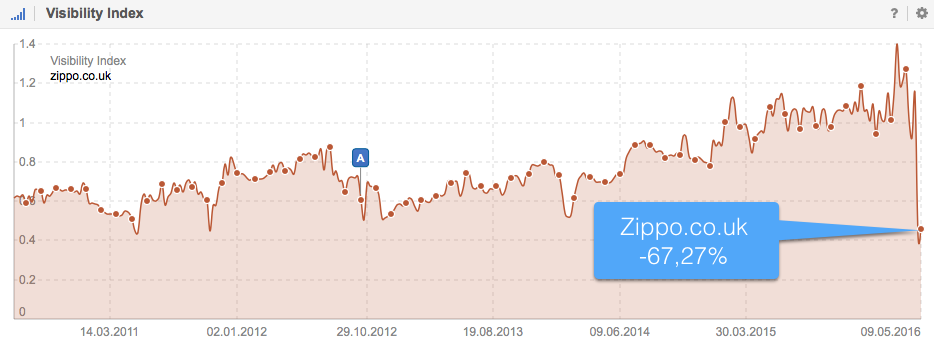
Please imagine the following: “Al Capone’s Spaghetti” is the UK’s most well known brand of Spaghetti. After 5 successful years, the manufacturer makes the marketing decision to start selling their Spaghetti under a new name. They now call their Spaghetti “Viva la Mama”, as they know very well that “Viva la Mama“ has a much more positive and stronger connotation for consumers, which should help them keep increasing their sales. Now they only have one problem as, somewhere along the way, they forgot to inform both their vendors and consumers about this change.
So, when “Spaghetti Viva la Mama” arrives at the supermarket (let’s say at Tesco), Tesco has no idea what to do about this product, as they have never seen it before. While this new brand is from a manufacturer they know, they have no information about the product itself and whether they can trust it to sell. It therefore gets treated like an entirely new product and the old shelf space for “Al Capone’s Spaghetti” is taken over by competitors.
Next time I wander through Tesco, with the usual shopping list that my wife gave me in hand, I cannot, for the life of me, find the “Al Capone’s Spaghetti” – which is clearly on the list, but not on the shelves. Luckily I remember exactly where on the shelves this product was and simply take what is there now – which turns out to be a competing product.
Once I get home and tell my wife that there were no more “Al Capone’s Spaghetti”, I quickly get reminded that I constantly forget things.
All in all: The move resulted in quite a bit of confusion and frustration for both vendors and consumers and, worst of all, I once again got scolded by my wife.
Zippo.co.uk
With Zippo we have the same problem. With a slight change in their webdesign came a large change to their URL architecture, which was not communicated to their vendor (Google). Without the correct 301-redirects, Google is left to wonder where a page has gone. Now, what exactly does this mean?
At first, Google will try to crawl the former URLs as part of their regular page-crawl and will receive a 404 status code on each page.
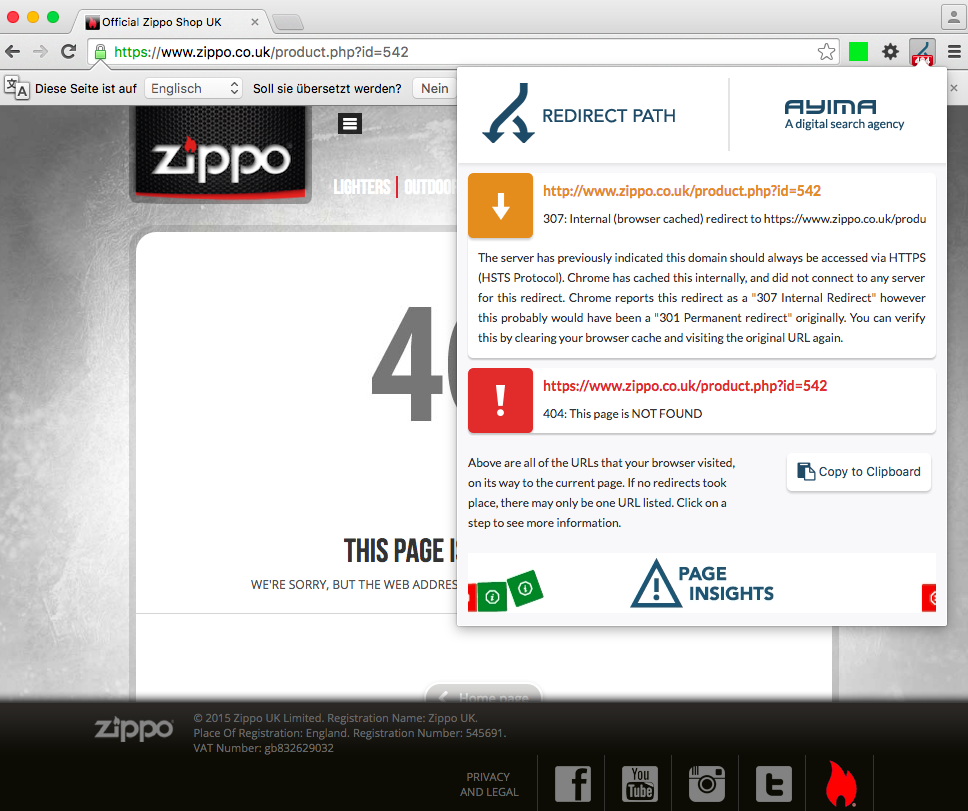
This status code 404 will tell Google that the page no longer exists, whereby Google will then deindex the URL, after a while. We can see this quite nicely when we look at the history for the amount of different URLs within the Top100 and Top10 results for Zippo.co.uk:
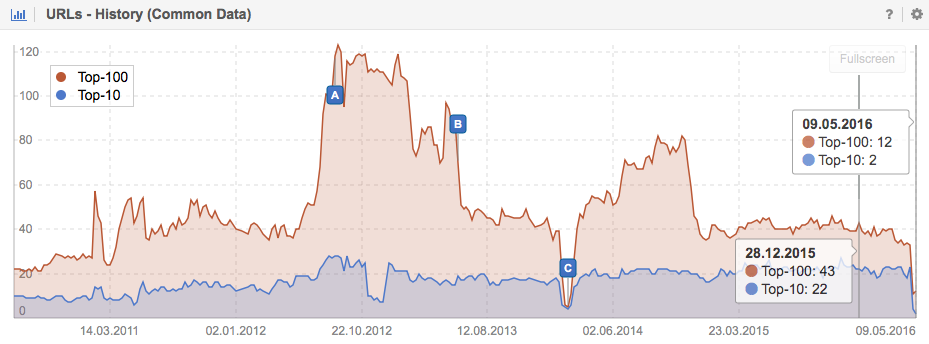
Following the deindexing of the URLs, we can next see a loss of keywords, where the missing URLs used to rank:
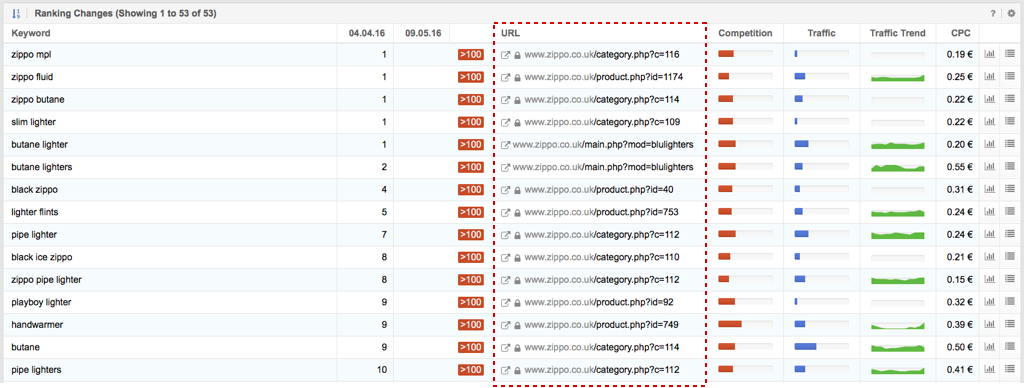
Google will have to rediscover each piece of lost content by themselves through a crawl of the domain, during which they hopefull find the new URLs. This can take time and could have been hastened by simply incorporating a 301-redirect from the old URLs to the new ones.
Final thoughts
The sad part of this story is that Zippo’s URL change in itself was a good idea. They went from obscure URLs to “talking” URLs, which let the user know what they are about. Despite this, Google will treat these new URLs as new content, simply because there are no redirects on the old URLs, telling Google that the page has moved to a new address. Take a look at this, they have less keywords now and the ones the have rank worse:
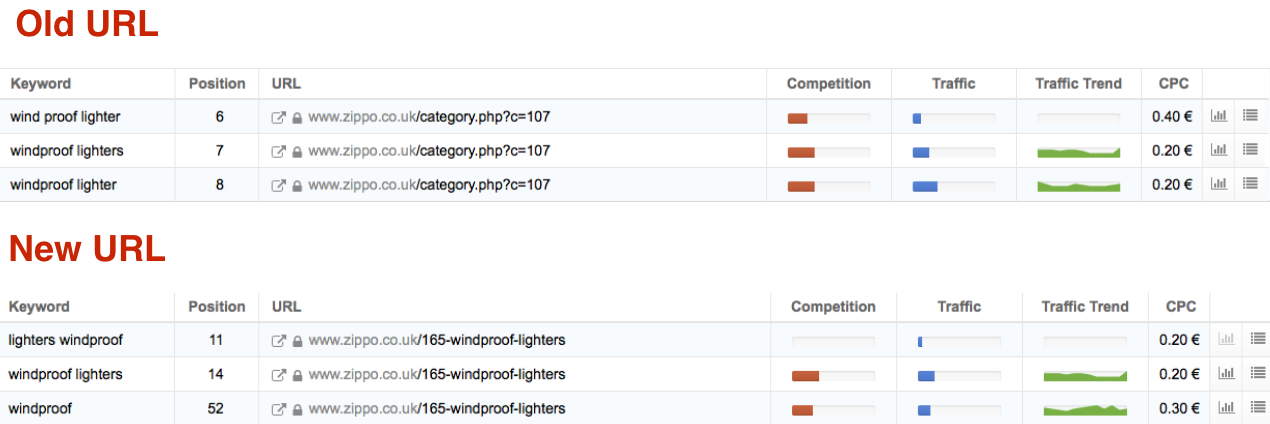
Google needs these redirects to understand that the same content has changed location and then move the important quality signals, such as authority, reputation, trust, user signals and the internal PageRank budget for crawling and indexing, to the new URL.
Please also keep in mind that, if you do not have a fitting target for your 301 redirect, do not simply redirect a page to a different product, the top category or the homepage of your website! Google will consider this to be a “soft-404” error and treat it as an error code… and you could get in trouble with your wife.
I hope you like Spaghetti 🙂
